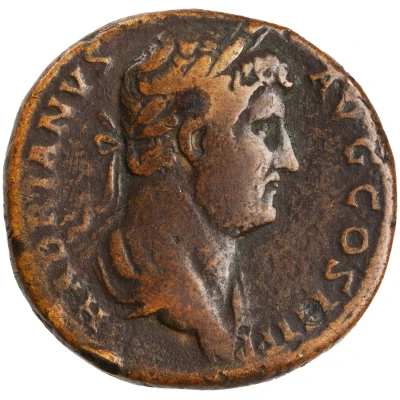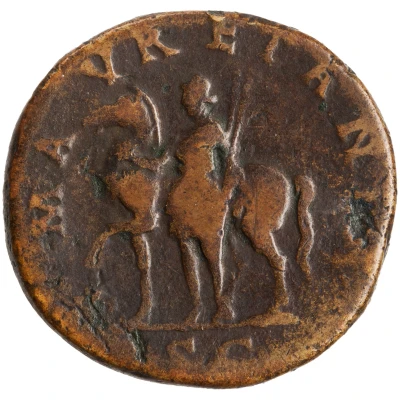Sestertius - Hadrian MAVRETANIA S C; Mauretania
| Orichalcum | 25 g | 32.5 mm |
| Issuer | Rome › Roman Empire (27 BC - 395 AD) |
|---|---|
| Emperor | Hadrian (Publius Aelius Hadrianus) (117-138) |
| Type | Standard circulation coin |
| Years | 130-133 |
| Value | 1 Sestertius = ¼ Denarius |
| Currency | Denarius, Reform of Augustus (27 BC – AD 215) |
| Composition | Orichalcum |
| Weight | 25 g |
| Diameter | 32.5 mm |
| Shape | Round (irregular) |
| Technique | Hammered |
| Demonetized | Yes |
| Updated | 2024-10-06 |
| Numista | N#256161 |
|---|---|
| Rarity index | 100% |
Reverse
Mauretania (Mauretanius?), rarely wearing elephant scalp, standing left, holding javelin and horse bridle; behind, horse pacing left.
Script: Latin
Lettering:
MAVRETANIA
S C
Translation:
Mauretania. Senatus Consultum.
Mauretania. Decree of the senate.
Comment
Source: Online Coins of the Roman Empire (OCRE)Interesting fact
The Sestertius coin , which features Hadrian and was minted in Rome between 130-133 AD, is made of a metal called Orichalcum. Orichalcum was a type of brass alloy that was used in ancient Rome for coins and other objects. It was prized for its durability and resistance to corrosion, and was often used to make high-quality coins that were meant to last for a long time. The use of Orichalcum in this coin reflects the high level of craftsmanship and attention to detail that was typical of Roman coinage during this period.

